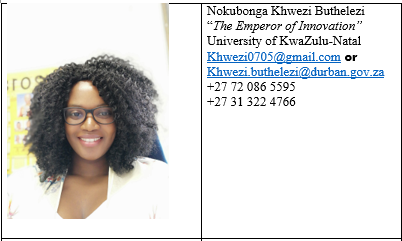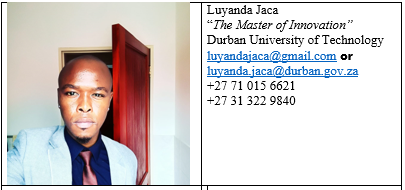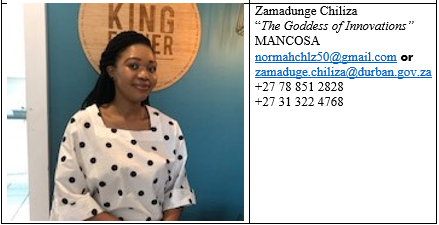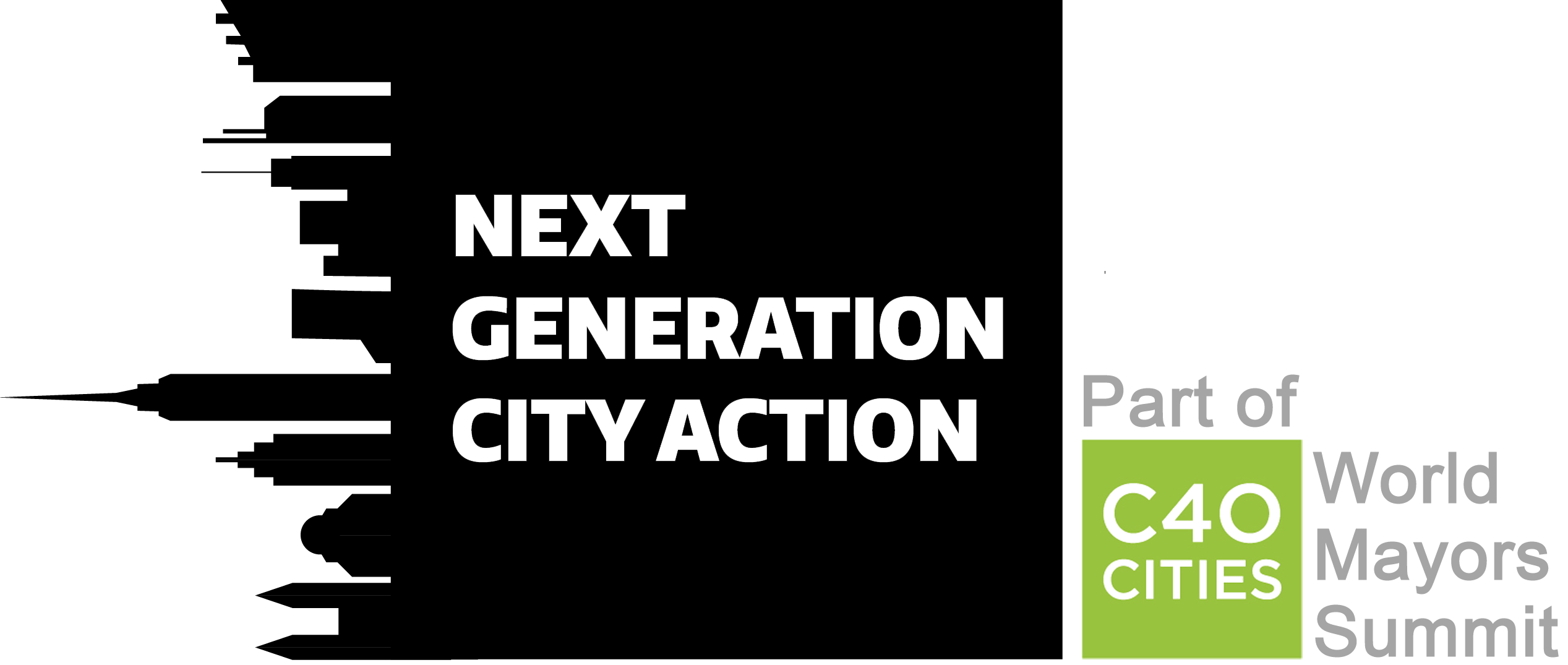Electric Mobility in Addis Ababa
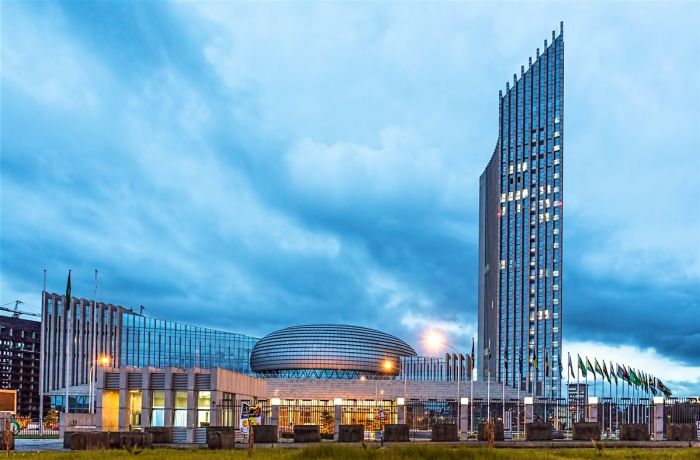
About Addis Ababa
Addis Ababa is the Capital city of Ethiopia; The City’s area is 540 km2. The city is divided into 10 sub cities and 116 woredas (Districts). Population of Addis Ababa is estimated to 2 738 248 (just over 2.7mil) people, accounting for 32,27% of total urban population (Central statistics, 2010). The city’s current population growth rate of 2.1% the city population is estimated to reach 5 million after 10 years and is considered the fastest growing city in Ethiopia. The city is the country’s political and economic centre, the seat of head offices of African Union & UN Economic commission for Africa. The city accounts for 70% of registered vehicles in the country are found in Addis Ababa. In Ethiopia’s capital, Addis Ababa experiencing a higher population growth due to higher rate of urbanization and rural to urban migration. The increased population of cities demand higher service sectors, transportation, industries and energy which in turn emit more air pollutants into the surrounding atmosphere, have contributed to growing use of personal motor vehicles, leading to increased pollution, congestion, and road safety challenges. Addis Ababa’s urban area has expanded at least four times faster than the rate of growth in the population since the early 1970s. Meanwhile, Addis Ababa contains more than 50 per cent of the country’s vehicles. As a result, vehicles pump nearly 1.4 million tons of Co2 into the atmosphere every year 29 per cent of the city’s total emissions. Since the quality of air is now becoming a serious issue of cities. The Addis Ababa city Government wishes to make significant improvements in the air quality and reliability of public transport in the city. Introduction of electric mobility as a public transport in Addis Ababa city will contribute towards Addis Ababa city government’s objectives of bringing paradigm shift from fossil fuel public transport to Electric bus urban mobility. The city pursuing the objective laid out in Ethiopia’s climate resilient transport system sector strategy of creating green transport system that enhances the environmental, economic, social and cultural well-being of Ethiopia’s population.
City Challenge
Provide the city with a financially viable, convenient and healthy options for navigating urban environments solutions. Investing in electric bus strategies, which will in turn play an important role in the sustainability of environmental, social and, economic aspect of the city, while investing in electric bus which will help meet other broader policy objectives, such as, safety, air-quality improvements, better use of resources, beautification & community development, so investments in Electric mobility can also yield significant political dividends
Solution 1:
Introduce designated “Electric bus” lanes & land use Zonings near the BRT route with relaxed parking requirements and no density (dwelling units/height) restrictions
By designated lanes we do not refer to the lanes with paint annotations on the tar mac depicting that this is a bus designated lane, but we refer to a barricaded by road curb designated electric bus lane. By barricading the lane, we hope to do away with cars in the “individual car lane” voluntary making use of the “electric bus lanes” due to no barricade and only painting annotations on tar mac as shown below during traffic peak hour times.

“The ideology behind this solution is that while people endure daily traffic in the individual car lanes, eventually they will envy the free-flowing traffic in the “electric Bus designated lanes” and switch from their individual cars to make use of the buses so they can be on time for their daily routine’s i.e. work, school, appointments etc.”,
Thus Co2 emitted into the atmosphere will be decreased due to less individual owned cars on Addis Ababa’s streets. To achieve this transition of mobility will require an additional incentive beside guaranteeing individuals punctuality to their destinations, but also making sure the transport fair is cheap and affordable to make the transition of the end user worthwhile.
Land use zonings near the BRT route
Should any parcel of land be within 400m radius of the “electric bus rapid Transport” (eBRT) route we ask that those properties be allowed to receive what we know here in Durban as the “Integrated public transport network Mixed use zone”. This prescribed zoning has relaxed parking requirements all the way down to Zero parking (accompanied by clauses to suit requirements of specific areas in the city) and has no density (number of dwelling units/height) restrictions. Essentially what we are trying to achieve with this alignment of property Zonings and eBRT route is creating a space that allows property developers to develop( in large number of units) for individuals who are not expected to own individual cars and who will be in need of this transport system, and individuals with individual cars will be forced to look for residential units further away from the transport route as developments near the BRT route will not have parking provided for end user owners or tenants.
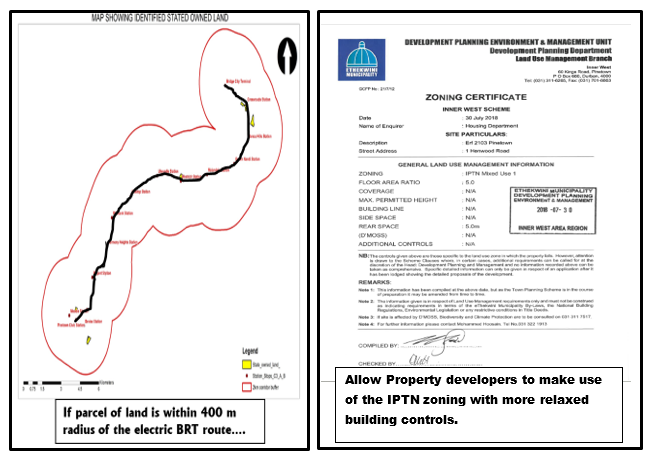
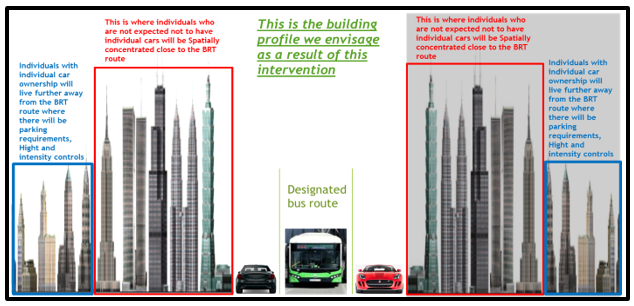
SWOT Analysis :
Strength: The designated bus lane will eventually force people out of their individual cars due to daily traffic in their lanes, hence less Co2 will be emitted from Individual car ownership.
The Zoning allows city to Spatially locate those in need of the public transport in close proximity.
Weaknesses: The designated bus lane will have an impact to more traffic in individual car lanes.( unfortunately we aren’t nurturing individual Co2 emitting car ownership in this case).
The Zoning does not have a parking requirement which may lead to on street parking. (again our solution looks at eliminating individual car ownership)
Opportunities: Will increase the sustainability of the transport system as it forces people from their individual car ownership due to traffic in individual car lanes.
The zoning allows for the city to align its low – medium income housing programmes with the transport route, low – medium income people who usually are in need of public transport.
Threat: Civil society with individual car ownership may take time for their “buy in” into the Designated bus lanes ideology.
The zoning may lead to overcrowding, hence the relaxed building controls(dwelling units and height restrictions), therefore they must be accompanied by clauses that suit specific areas of the city.
Impact of Solution 1:
Environment Impact: Eventually this system will eliminate individual car ownership and there will be less Co2 emitted from individual cars polluting the environment.
Social Impact: The combination of Solution one will make sure of the efficient mobility of citizens in need of the transport system, thus their livelihoods will be improved.
Economic Impact: This intervention will bring certainty to the financial viability of the transport system through revenue collection(Trip sales) which will contribute to the city’s economic growth, and in turn civil society will subsidise each others travel cost by sharing the bus fair, while they each save for their future individual electric car.
Solution 2:
Make Terminals safer & user-friendly environments to wait for the bus and Phase out the manufacturing and supplying of buses.
The Addis Ababa Transport policy highlighted how they have Infrastructure issues related to terminals, “sub-standard bus terminals some of which are not even shaded”. Introducing these terminals will address the issue of a Safe (have security assigned to each station or terminal) & User friendly (shaded and secured) bus terminals for waiting for the bus.
Here are some of the South African Bus Terminals that we have introduced in our South Africa’s BRT routes to assist will the issue of sub-standard bus infrastructure that leads to people not making use of the transport system, leading to the failure of the BRT.
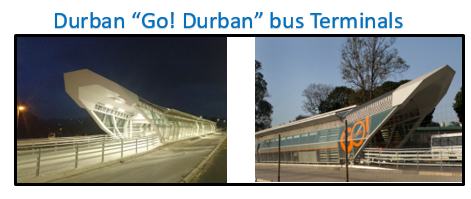
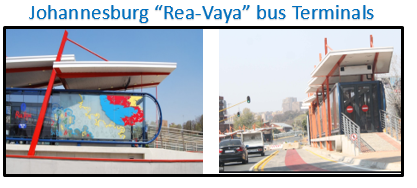
Phasing out Manufacturing and Supply of buses
To deal with the supply and demand issue of the buses, given the context of Addis Ababa’s socio-economic status we would advise that the supply of buses take a phased approach and not oversupply quantity of buses that won’t meet the current demand. The supply of buses will be measured by population census public transport demand study of the area. The phased approach of procurement is also recommended as tech evolves and costs are reduced. This will also allow for the buses to be utilised at an affordable price as service providers wont end up having to escalate trip costs to cover large scale bus maintenance costs (Affordability incentive to the end user to make use of the transport).
SWOT Analysis
Strength: The Bus terminals will make for and a safe and secure environment for people to wait for the buses.
The phasing out of buses will make will make for a sustainable transport system.
Weaknesses: Given socio-economic status of Addis Ababa the terminals seen in this presentation may prove to be expensive (cheaper options may be considered).
The phasing out of buses may have a slow service to the end user at the early stages when transport department is still trying to figure out the appetite for the buses during the phased release( department to pay close attention to trip trends).
Opportunities: These terminals are seen as an opportunity to attract more passengers as reasons to people not using the bus could be due to the existing inadequate bus terminals, some which don’t even have shade.
Phasing out of buses makes for a steady and measured growth of the transport system.
Threat: Terminal infrastructure theft during construction phase ( risk analysis to be done to mitigate this issue).
The slow service highlighted in the weakness column, if not properly payed close attention to, may lead to the failure of the transport system.
Impact of Solution 2:
Environment Impact: Solution two consist of tools to make transport system sustainable so individual Co2 emitting cars can be done away with and less Co2 will be emitted in Addis Ababa.
Social Impact: Buses will be made affordable through the phasing out of bus supply approach and Safe & secure Bus terminals will contribute to societies better livelihoods, through improved use of public transport.
Economic Impact: The phasing out of buses will help with the financial viability of the whole transport system and make sure the system doesn’t run on a deficit.
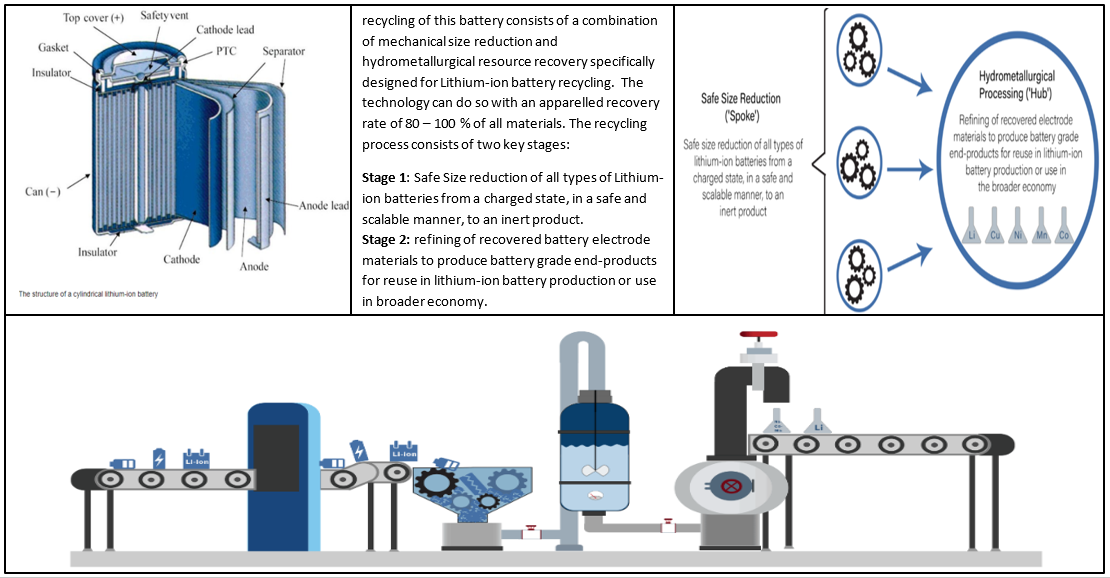
Supporting Technologies
Solar Energy

Piezoelectric Energy
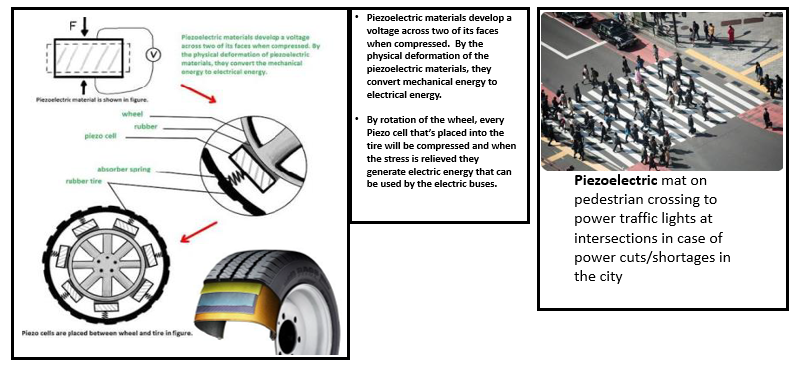
Biomass Generated Electricity
Electric buses will run on electricity. Electricity is generated from coal which is considered a non-renewable resource. Since coal is a non-renewable resource other sources of generating electricity will need to be considered, biomass generated electricity is the alternative. Biomass Generated electricity uses Forestry crops & residue, Agricultural crops & residue, Sewerage, Municipal Solid Waste, Animal residue & industrial residue. The electricity generating process is annotated bellow.
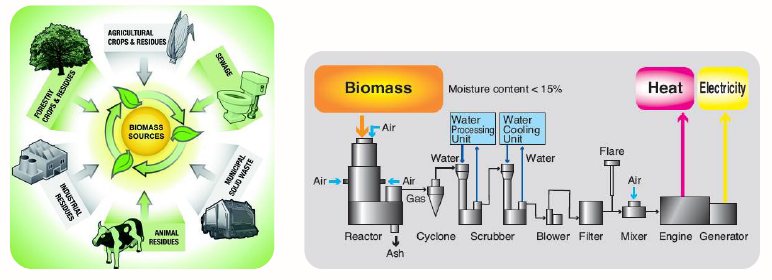
Existing or New (private public) Partnership can help accelerate the implementation of your solution.
This is not so much as a new partnerships but it is doing away with the silo approach to development by having a more transversal approach to the implementation to make sure the transport system is sustainable.

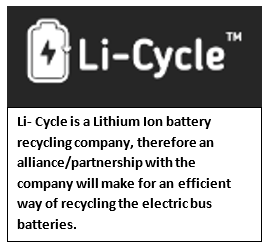
References:
Multilayer Piezoelectric Generators – information source: https://www.americanpiezo.com/standard-products/textbook.html
Introduction(About Addis Ababa) and status quo- information source:
Ethiopia Green Economy Policy
Addis Ababa Transport policy
lithium ion battery – information source:
https://li-cycle.com/?gclid=EAIaIQobChMIvIeKtrH_5AIVCbrtCh0zeAlBEAAYASAAEgLyQ_D_BwE
Biomass Generated Electricity – information source :
https://www.wbdg.org/resources/biomass-electricity-generation
The Team Members
